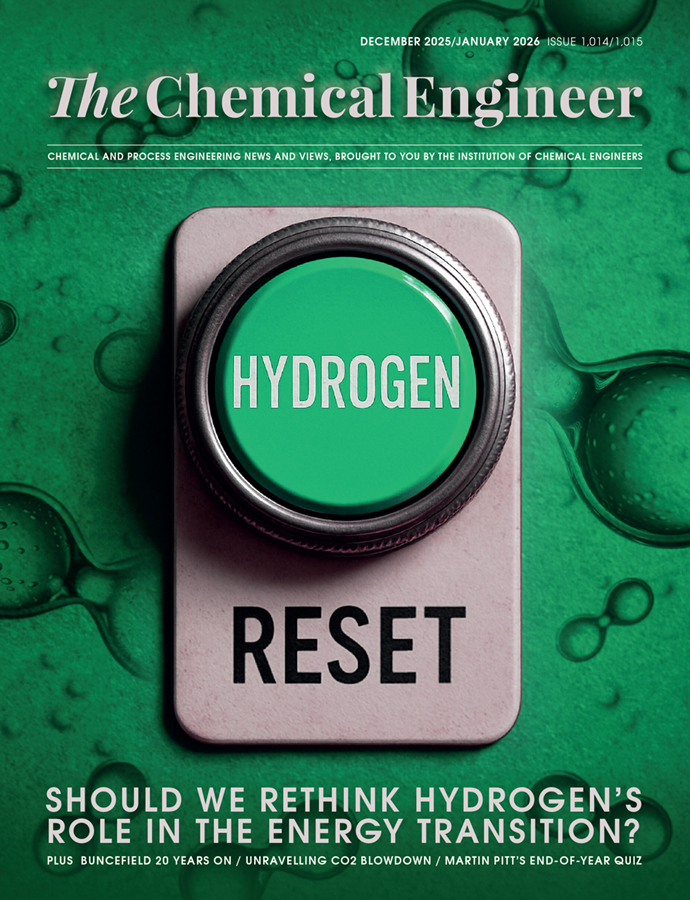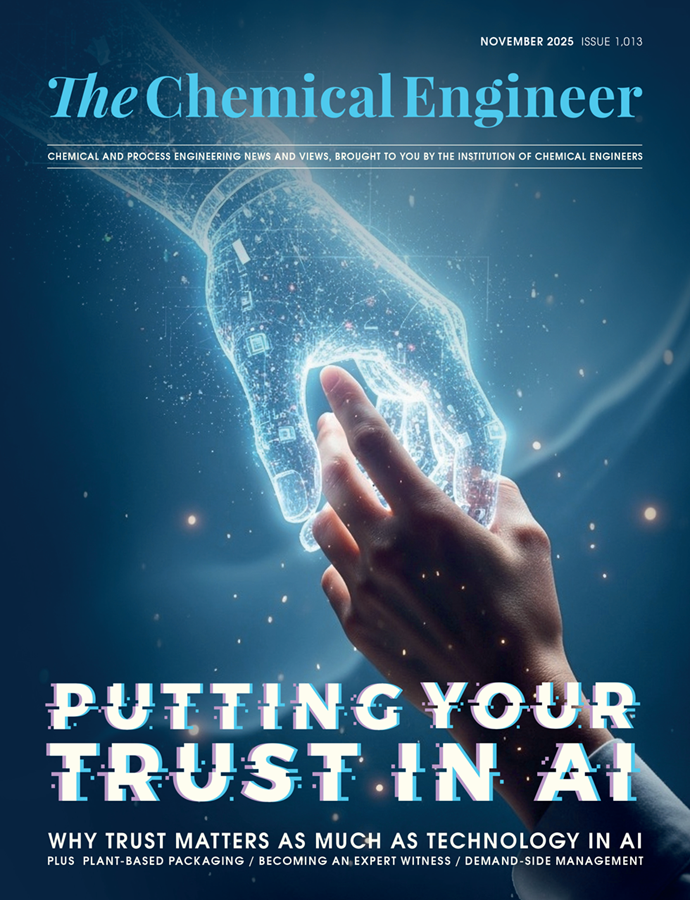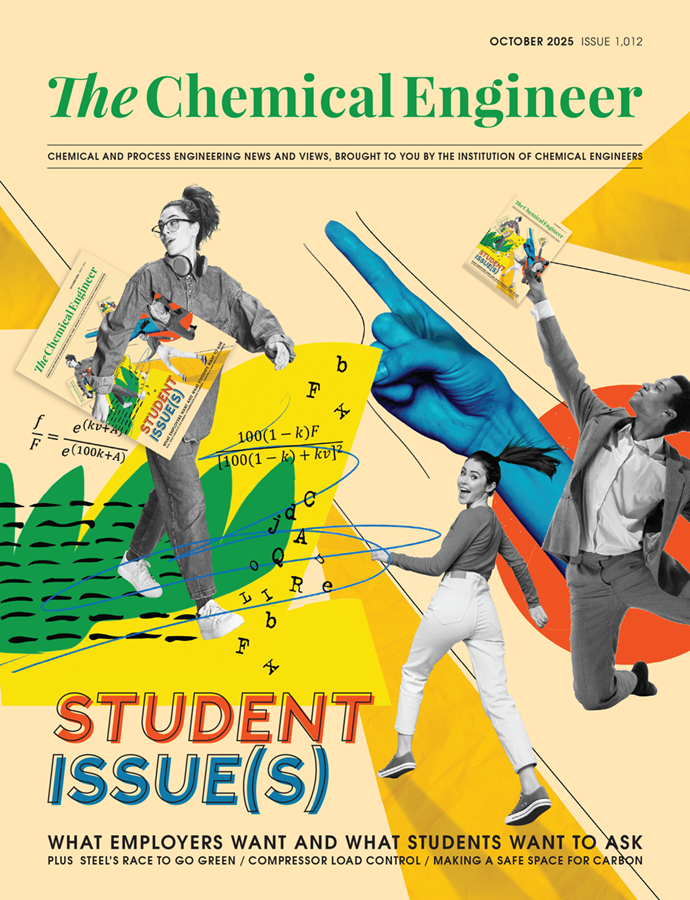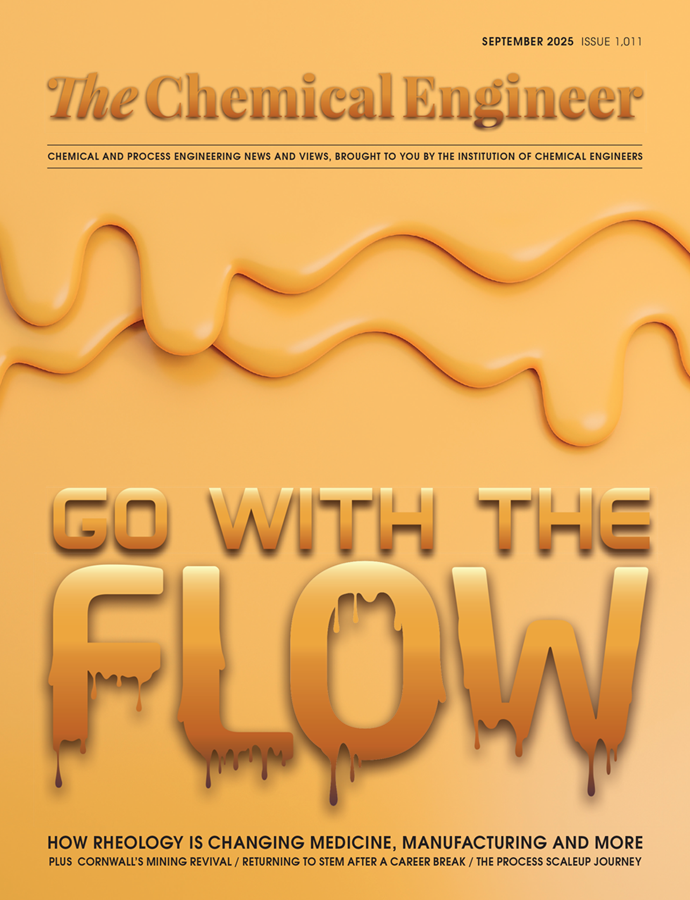Cleaning Up Consumer Goods
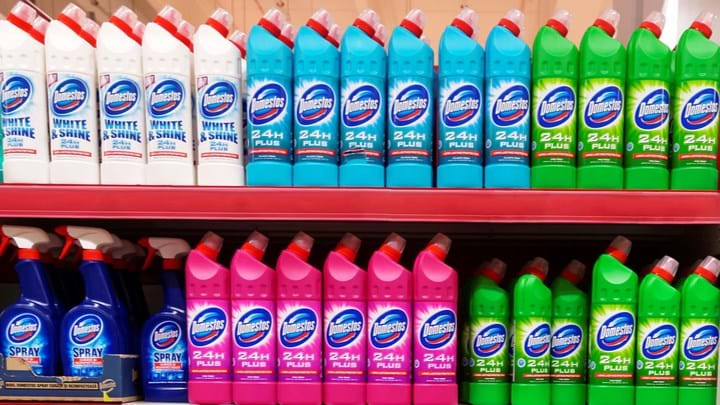
“I HAVE kids and grandkids, so I really think it would be nice if the planet I left them wasn’t the sh*thole that it is at the moment.” So says David Bott, the Society of Chemical Industry’s (SCI) head of innovation. Bott is talking to TCE about a multi-party commercial R&D project to turn captured carbon emissions into chemicals for consumer goods, which concluded last month.
The Flue2Chem project was launched in February 2023 as a pilot scheme coordinated by the SCI with the goal of demonstrating an entire net zero supply chain for cleaning products. Instead of the usual situation where “most people in the supply chain don’t know what all the other people do,” Bott says the £5m (US$6.8m), two-year project aimed to bring together industrial CO2 emitters, chemical manufacturers and fast-moving consumer goods producers to explore whether flue gas could be converted into the surfactants used in cleaning products.
Consumer goods supply chains are a huge opportunity for reducing emissions. SCI says that more than 5% of the world’s fossil fuel carbon is used to produce materials like plastics, textiles, and other components found in everyday consumer goods. “People just do not understand quite how riven through their everyday life the petrochemical supply chain has become,” says Bott.
Flue2Chem started by installing solid state absorption-based carbon capture technology at the Holmen paper mill in Workington in Cumbria, UK. The carbon capture had been developed at the University of Sheffield, which was then scaled up for Flue2Chem by Carbon Capture and Utilisation (CCU) International.

Holmen runs almost entirely on woody biofuel and releases between 2,000 and 2,500 tCO2e per day. The CO2 captured from the mill was then sent to chemicals manufacturer BASF, who reacted it with green hydrogen in a thermo-catalytic process to produce 87% pure ethanol, and to the University of Sheffield, who converted it first to long-chain olefins and then to dodecanol, a long-chain fatty alcohol. BASF's ethanol was then converted into ethylene oxide via a series of reactions.
Getting to a surfactant from here was an ambitious goal – and at this point they met their first stumbling block. They had initially planned to combine the ethylene oxide and dodecanol to make the surfactant, but 18 months into the project, it was acknowledged they needed to scale back. “We realised that delays in capturing the carbon dioxide meant our goal of having ‘line of sight’ between captured carbon dioxide and the final products would not be available,” SCI reported in June after the project concluded.
Instead, they sourced commercially available ethanol from LanzaTech in China, who produce it from biological gas fermentation of captured steel mill carbon monoxide emissions. Croda then converted the ethanol into ethylene oxide at its Atlas Point facility in Delaware, US, and reacted it with its own commercially available dodecanol – sourced from “sustainable” palm kernel oil – to produce a surfactant similar to the company’s existing Brij L7 product.
They also faced engineering difficulties with the carbon capture process. CCU International’s technology relies on compressing the flue gas, but Flue2Chem found most commercially available compressors were “leaky” as they are designed for compressed air rather than industrial flue gas emissions. They also faced challenges in cooling the gas, a necessary step in solid-state carbon capture systems.
Then there were problems that BASF had with the chemistry. Their process for converting ethanol into surfactant involved three reactions, but a byproduct from the first reaction contaminated the catalyst used in the second. BASF is planning to hold trials with an alternative catalyst later this year.
Nonetheless, Bott feels they largely demonstrated the model overall – even if they have so far struggled to connect the production of the alcohols from the captured CO2 to the end surfactant. He hopes the model process can one day be scaled up for the commercial production of a range of chemicals. For the demonstration project, the team focused on producing a single molecule. “We picked the simplest molecule which was impactful at tonnage scales,” Bott says, noting that the ethylene oxide-dodecanol surfactant Flue2Chem set out to produce is currently manufactured at a scale of 6m t/y. “It’s used in everything”.
Once they had made the surfactant from LanzaTech’s ethanol and Croda’s dodecanol, they sent it to P&G, Unilever, and Reckitt, who tested it against those used in their current detergents and found it delivered similar quality and performance. “The findings of the Flue2Chem project could eventually lead to the sustainable production of detergent ingredients and many other consumer products,” the report concluded.
Tipping the scales
The challenges faced by Flue2Chem pointed to a single issue: scalability. The report notes that commercial scaleup will face “significant hurdles” – a point Bott underscores bluntly, saying: “We’re not very good in this country.”
As ever, cash is a major barrier. Flue2Chem calculated that, while the process could reduce the carbon footprint of the surfactant by more than 50%, it would cost 5–10 times as much as conventional production. A significant portion of the cost stems from the project’s reliance on green hydrogen, whose production requires large amounts of electricity – costs that have soared in recent years for industrial users in the UK and Europe. They could have used blue hydrogen, but SCI was reluctant to choose this option, as it would have increased the demand for carbon capture in the process, already a stumbling block.
Bott says the UK has an abundance of engineering skills and knowledge, noting that as part of Flue2Chem, CCU International successfully scaled the University of Sheffield’s carbon capture technology in under 18 months. The difficulty lies in going from demonstration to commercial scale. “We don’t utilise the very strong science and engineering base in the UK to do that in a commercial scale,” he says.
Bott feels positive about the direction the UK is taking to address some of the biggest challenges in energy transition scaleup, especially since the government published its Industrial Strategy last month (“Thank the lord,” he says, pumping his fists). “Having an industrial strategy is a big up from the last five or six years where we haven’t had [one]. The problem is that having an industrial strategy when you have no money is kind of difficult.”
If a commercial version of Flue2Chem were to succeed, Bott is realistic that green supply chains for consumer goods would not be a silver bullet for global warming, nor deliver significant climate-reversing benefits. “If you went on collecting the carbon dioxide at the rate we need for the petrochemicals industry, it would take you about a couple of hundred years to remediate the atmosphere back to 1850 levels.” In other words, while things may not improve quickly, we can at least prevent them from getting worse. To that end, he urges scientists and engineers to stay focused on the task at hand and what is realistically achievable. “We’ve been screwing up the planet for so long, we’ve forgotten what it means to make it better.”
The original version of this article incorrectly stated that BASF "reacted the CO2 with green hydrogen in a thermo-catalytic process to produce dodecanol, a long chain fatty alcohol, and 87% pure ethanol". BASF in fact only produced ethanol, while dodecanol was made at the University of Sheffield.
Recent Editions
Catch up on the latest news, views and jobs from The Chemical Engineer. Below are the four latest issues. View a wider selection of the archive from within the Magazine section of this site.

